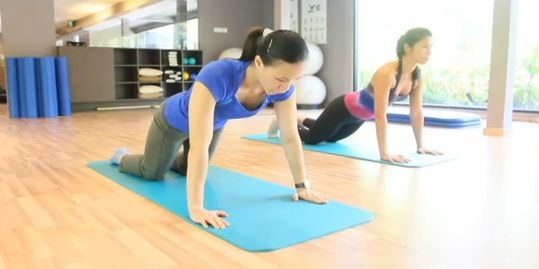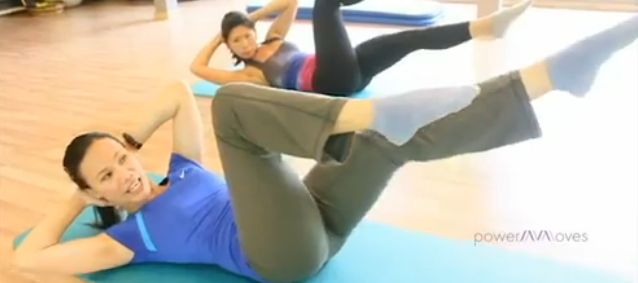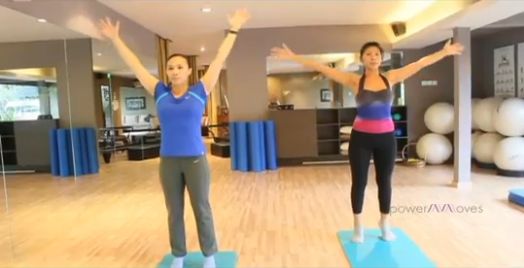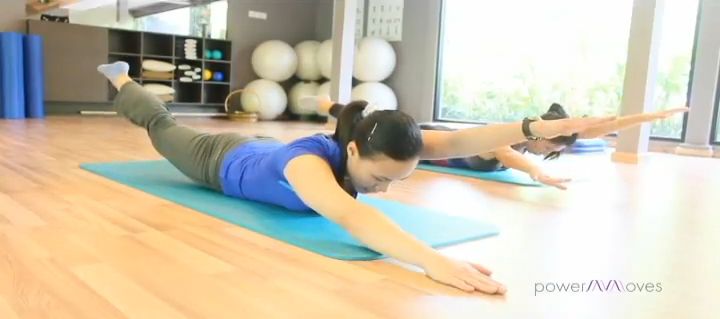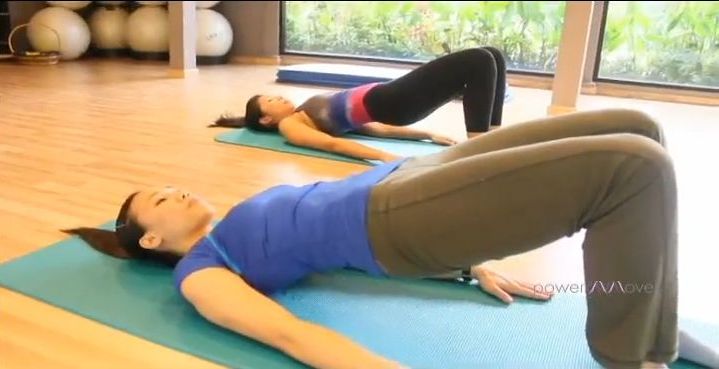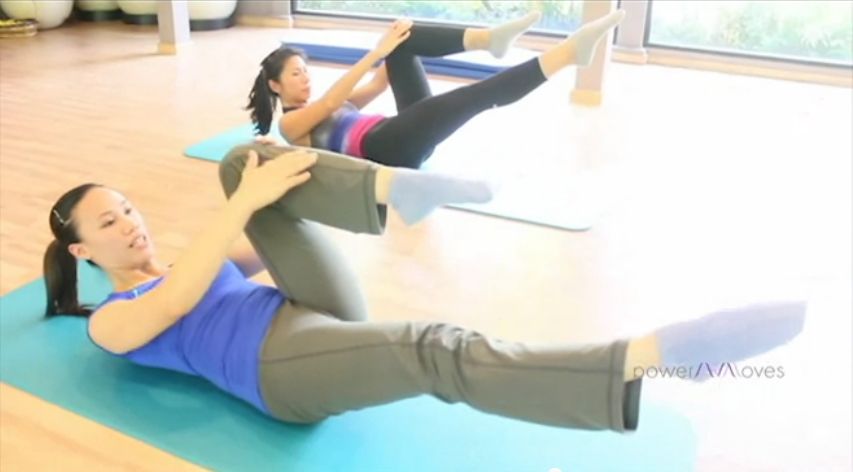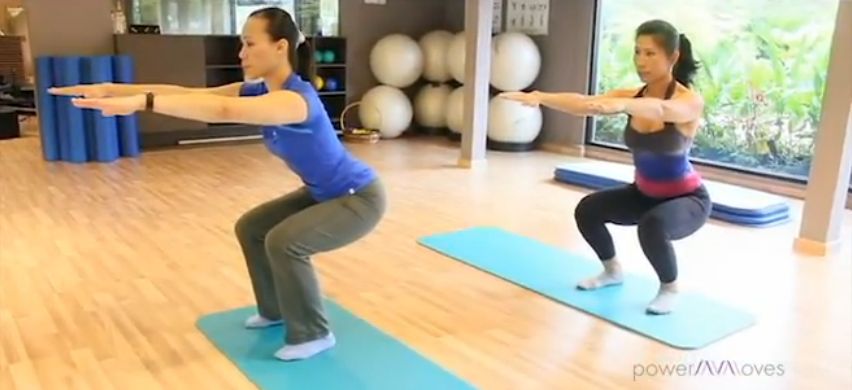This is one of the most popular Pilates exercises for developing your core strength and stability. The plank is known to target abdominal muscles and shoulder stability. Full optimization is achieved through the integration of the core stabilization muscles in the pelvic-lumbar region and the shoulder girdle. Good
alignment and solid stabilization must be present. The arms, glutes and legs should be active as well.
The most common plank is the front plank which is held in a push-up position with the body’s weight borne on forearms, elbows and toes. You will identify that a plank is successfully performed when good form is achieved (the body is in a straight line from head to toe), you can feel your core (center) is working and your hands are directly under your shoulders.

